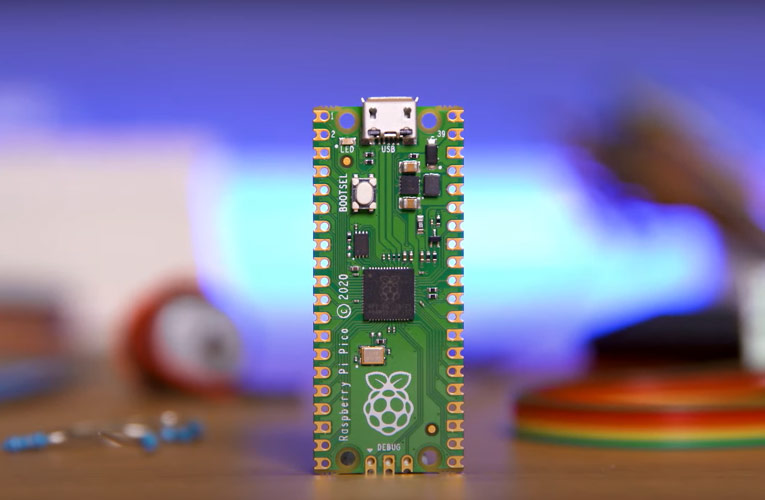
The Raspberry Pi Foundation has announced the launch of its new development board, the Raspberry Pi Pico. Being one of the first microcontroller-class products from Raspberry Pi, this compact and low-cost board is built on a brand-new chip called RP2040 which was developed by the Raspberry Pi Foundation itself. The RP2040 is a Dual-core Cortex-M0+ processor with 2MB Flash, 264KB SRAM, and 133MHz flexible clock. Whether you’re looking for a standalone board for deep-embedded development or a companion to your Raspberry Pi computer, or you’re taking your first steps with a microcontroller, this is the board that could be for you.
This new board is not a replacement for the classic Pi3 or Pi4 but is more like an additional add-on module, which allows you to interface hardware sensors and actuators to your project. The board does not have a lot of computing power but it makes up to it by providing rich GPIO peripherals and on top of that, it can be easily programmed by using both Micro python/C by simply connecting the pico board to a computer or to a Raspberry Pi. In short, this new board makes up for the muscle power that our classic Pi’s were missing, by providing 26 multifunction GPIO pins comprising of 3 Analog inputs, 16xPWM, 2xUART, 2xSPI, 2xI2C, etc. A more detailed specification of the pico board is listed below.
Raspberry Pi Pico (RP2040) Specifications
- Dual-core ARM Cortex M0+ processor, flexible clock running up to 133 MHz
- 264kB of SRAM, and 2MB of onboard Flash memory
- Castellated module allows soldering directly to carrier boards
- USB 1.1 Host and Device support
- Low-power sleep and dormant modes
- Drag & drop programming using mass storage over USB
- 26 multi-function GPIO pins
- 2×SPI, 2×I2C, 2×UART, 3×12-bit ADC, 16×controllable PWM channels
- Real-time clock (RTC)
- Temperature sensor
- Accelerated floating-point libraries on-chip
- 8×Programmable IO (PIO) state machines for custom peripheral support
- Dimensions: 51mm x 21mm
The Raspberry Pi Pico is currently available for purchase for 4$, the board can be programmed using popular Thonny IDE and other SDK and toolchain for pico can also be found on the raspberry pi website. There is also a neat Pico getting started guide for beginners to get building with pico out of the box.

